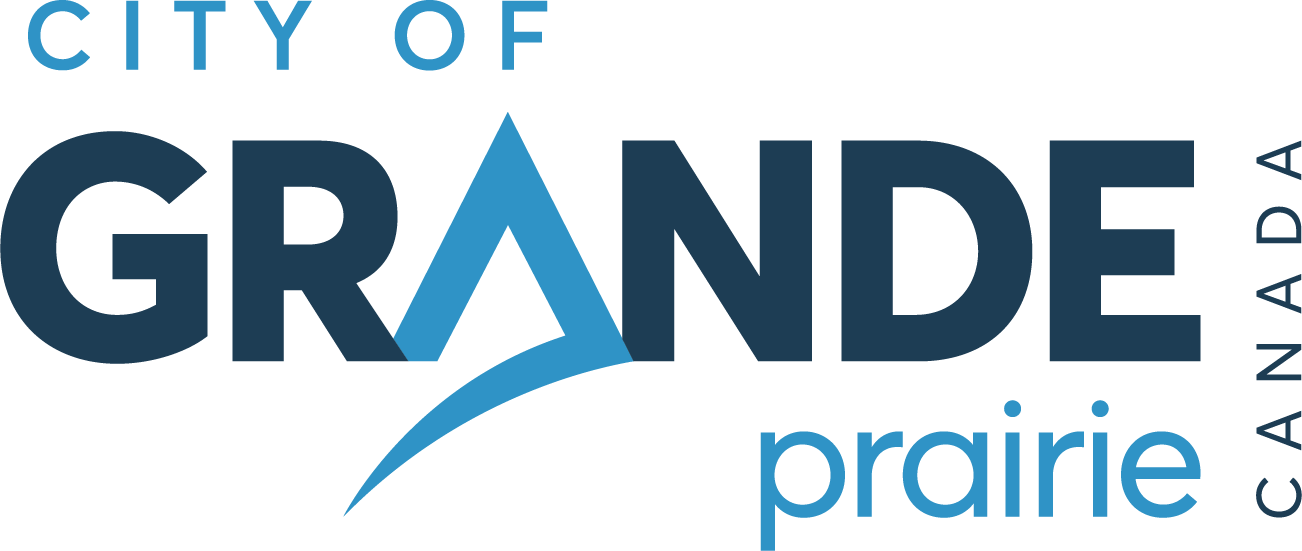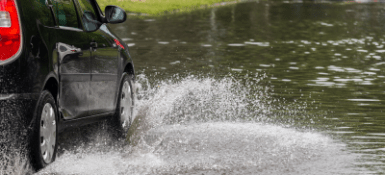Report a pothole (aka. pot hole, pot-hole), flooding and storm drain concerns through our online portal, AccessGP
Spring is the time in our City when potholes can rear their irritating heads. They no doubt create driving challenges, and are generally an irritant and an eyesore. We want to share what we know about these vexatious potholes and how we address them.
What You Need to Know About Potholes
Potholes can occur in a number of ways at this time of year - all of them have to do with melt water during the spring thaw and cracks in the road surface.
Water seeps through cracks in the road surface and softens the sub-base under the pavement (this weakens the sub-base; it can no longer support the pavement above it or the traffic loads placed on it).
Thaw water seeps into cracks in the pavement or sub-base. Temperatures drop and water freezes. (This is the main cause of potholes in our climate). We refer to this a freeze/thaw cycles. These freeze/thaw cycles occur repeatedly during the spring season and, in the last few years, over the winter season as well. The freezing causes the sub-base to expand, which can cause localized pavement failure (a pothole).
Water in surface cracks, or in between concrete and bituminous (asphalt) overlays can freeze causing pieces of pavement to "pop" out.
Winter Potholes
Winter potholes present a particular issue for transportation crews as the fix can only be temporary during this season. More permanent repair materials are able to be used during the summer months.
Potholes are an ongoing challenge, especially during the winter months when repairs are often temporary due to weather constraints. Our transportation crews use a variety of techniques and materials to ensure roads remain as safe and functional as possible year-round:
Pothole Repair Methods
- Cold Mix Patch
- Used for temporary repairs during cold weather conditions.
- This asphalt product remains workable in low temperatures, allowing for immediate patching. However, it’s considered a short-term solution as it doesn’t achieve a strong bond between the pavement and patch. Water infiltration during winter months can lead to recurring pothole development.
- Hot Recycled Asphalt
- Applied during extended periods of warm weather for more durable repairs.
- This method provides a higher-quality fix by ensuring a better bond between the patch and the existing pavement.
- Infrared Heater
- This specialized equipment heats the road surface, making it pliable for raking and repacking.
- While this process takes more time, it delivers the most durable and long-lasting results for pothole repair.
By employing these techniques, we aim to balance the immediate needs of maintaining road safety during colder months with more permanent solutions in the warmer seasons.
Report Pesky Potholes
The best way to report potholes is through our online portal:
Online Services | City of Grande Prairie
Alternatively, you can contact AccessGP by dialing 311 or report via email at info@cityofgp.com and our team will work with you to create a call to action.
- Know the location; even the side of the road is helpful to know
- The size of the pothole is important. Potholes described to customer service representatives as very large, deep or threatening to traffic are sent for immediate attention.
Prioritizing PotholesDid you know that potholes are prioritized based on the category of street?
- Priority one (major arterial roads) are attended to first
- Priority two, bus routes/collector streets are addressed second
- Residential streets are placed next on the list
- Cold Mix Patch
The annual spring clean-up procedure starts as soon as most of the snow is gone and temperatures moderate.
How do we sweep?
The first locations to dry are on top of the concrete boulevards. These are cleaned using tractor mounted sweepers, hand operated motorized sweepers, brooms and shovels.
The boulevards are then washed down with pressurized water from our water trucks. In the early part of the season, potable water is used for flushing but surface water sources are used when they thaw. (132 Ave west of 116 St and corner of 68 Ave and 84 St).
The City has 4 Street Sweepers and their operation is weather dependent. Cold temps (less than 0°C) and rain or wet surfaces will delay the operations.
Sweeping continues on 3 eight hour shifts weekdays. They are all tracked by GPS so the program can be managed.
We also use a large conveyor type machine (Broce Broom) that picks up larger amounts of debris that the regular street sweepers are not designed to pick up. This unit loads the debris directly into a truck and then hauled to disposal sites.
Sweeping debris picked up from the street sweeping and the Broce broom operation are stockpiled at several locations throughout the City and eventually ends up at the Aquatera Landfill. Aquatera uses it for cover material and is accepted free of tipping fees.
Where do we sweep?
The sweepers start on the main roads, priority 1, much the same way as the snow removal program. This can take up to a month depending on weather and amounts of material on the road from winter operations.
The sweepers then proceed to priority 2 and priority 3 roads and residential areas. This program follows the same rotation in neighbourhoods as the Residential Snow Clearing Program.
When one complete rotation of the City is complete, the sweepers will move back to priority 1 routes and continue through the City. Some roads require regular sweeping; for example, Wapiti Road and around rail road tracks.
Asphalt Trails are swept by Transportation Crews. Muskoseepi Trails are swept by Parks Crews. This starts as soon as conditions allow.
Grass Medians are swept by Transportation Crews to clean debris left over from winter operations. This is done with pan broom sweepers on bobcats and starts as soon as the grassed medians dry. This is concentrated on main roads; especially intersections.
Residential Street Sweeping
Residential street sweeping follows the same neighbourhood pattern as the City’s residential snow clearing schedule. Each area is scheduled for sweeping the day before its regular waste collection day during its designated week.
Week A
Week B
Monday
Hillside, Mountview and VLA/Montrose. Crystal Heights, Crystal Landing, Summit and Ivy Lake Estates. Tuesday
Patterson and South Patterson and Southview. Country Club Estates, Countryside North and South, Signature Falls and Country Club West. Wednesday
Avondale, College Park and Swanavon. Cobblestone, Fieldbrook, Highland Park, Riverstone and Smith. Thursday
Kensington, Mission Heights, O’Brien Lake and Stone Ridge. Pinnacle Ridge and Westpointe. Friday
Arbour Hills, Gateway, Northridge, Royal Oaks and Westgate. Lakeland, Easthaven, Crystal Ridge, Copperwood, and Crystal Lake Estates. Citizens may report areas in need of sweeping by phoning Access GP at 780-538-0300. If you see street sweepers in your area, please keep vehicles off the road so equipment can do a thorough job.
How Can You Help?
When sweepers are in your area, you may assist the clean-up process and help crews do a thorough job by keeping your vehicles off the road.
Gravel roads in our city cause issues with dust. Gravel dust can cause driving hazards, breathing issues and can be a general nuisance. To suppress this dust we use a Calcium Chloride Product sprayed over the gravel surface.
We provide two types of dust suppression services
Gravel roads in the city receive the Calcium Chloride treatment throughout the spring/summer season on an as needed basis.
Residents in our rural service areas can apply to receive dust control treatments to sections of road near their properties for a fee by filling out the Dust Suppression Application.
Scheduling of these treatments are subject to regular dust suppression program priorities and in combination with other requests to maintain cost effectiveness.
Residents must apply for a minimum of 100m length of road way. The width of the treatment will be 7 metres (23 feet). Application fee is $440.00 / 100 metre length of road.
The City of Grande Prairie does not guarantee the effectiveness of the dust control agent. Once treatment is applied no refunds of the application fee will be made.
Road bans are a standard practice for the City, aimed at protecting gravel roads in the region. The City of Grande Prairie may issue road bans during construction, regular maintenance, or due to special seasonal circumstances such as spring melt or above average weather conditions.
2025 Gravel Road Bans
There are currently no active gravel road bans as of May 6, 2025.




